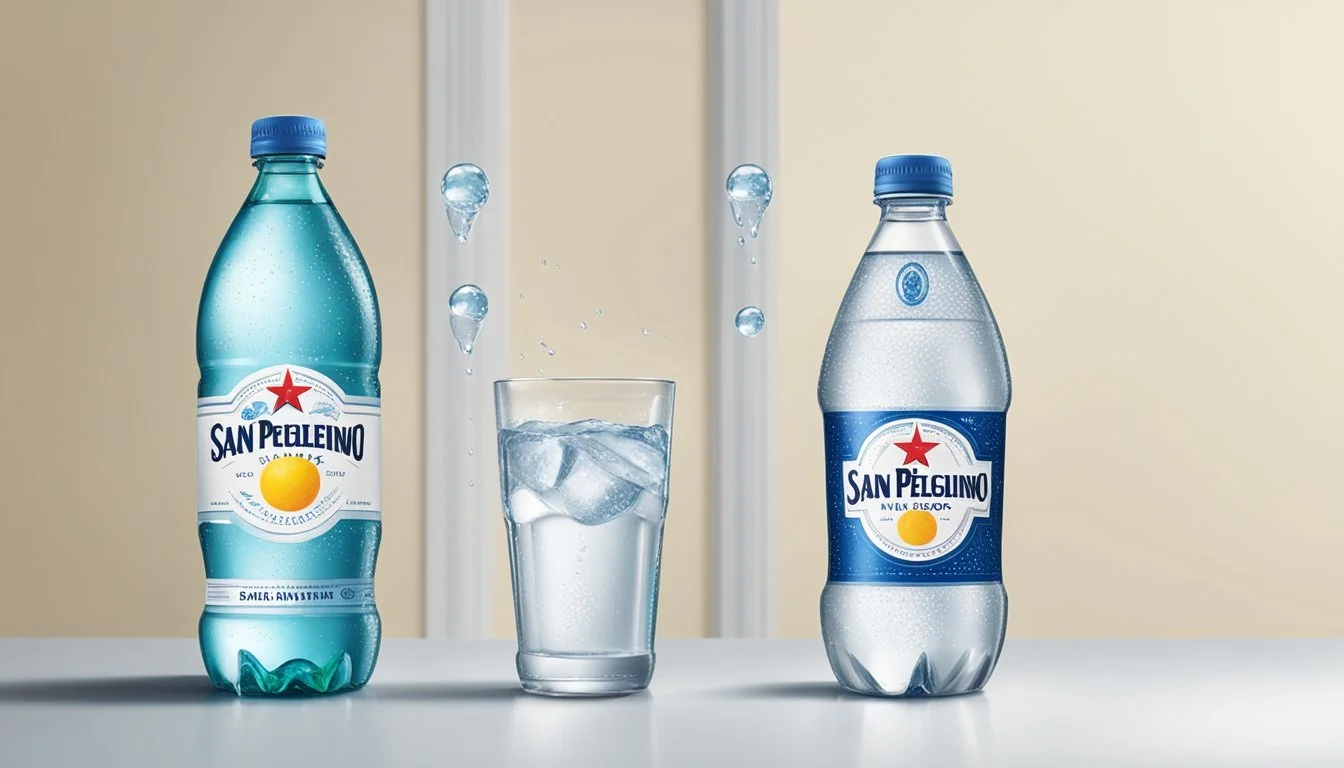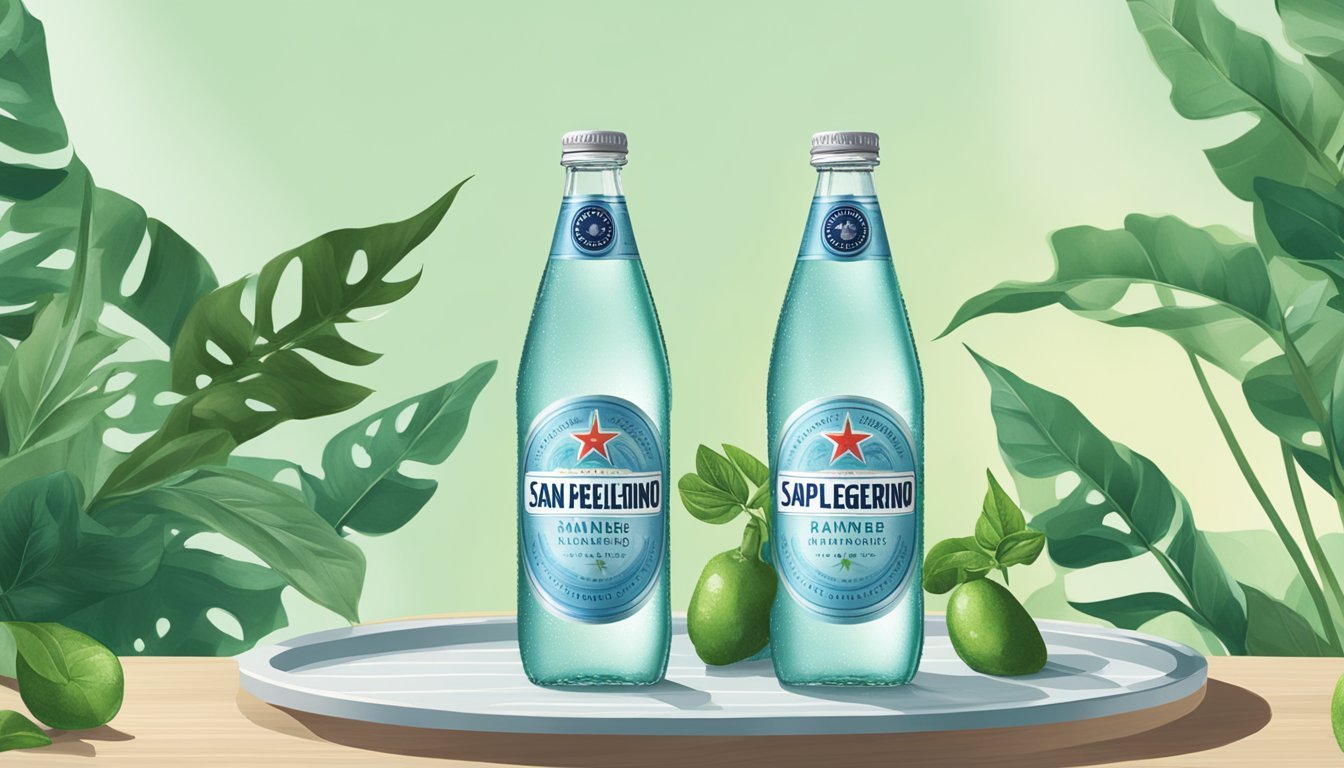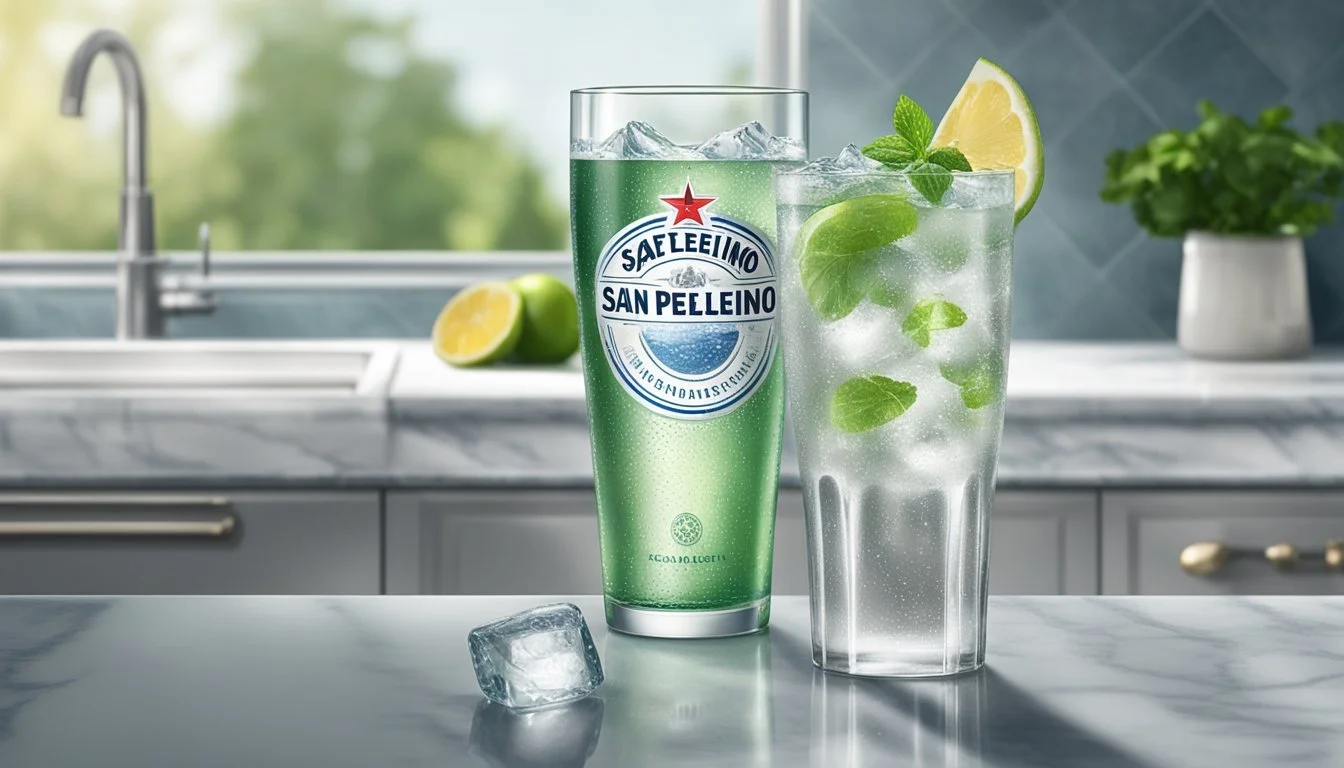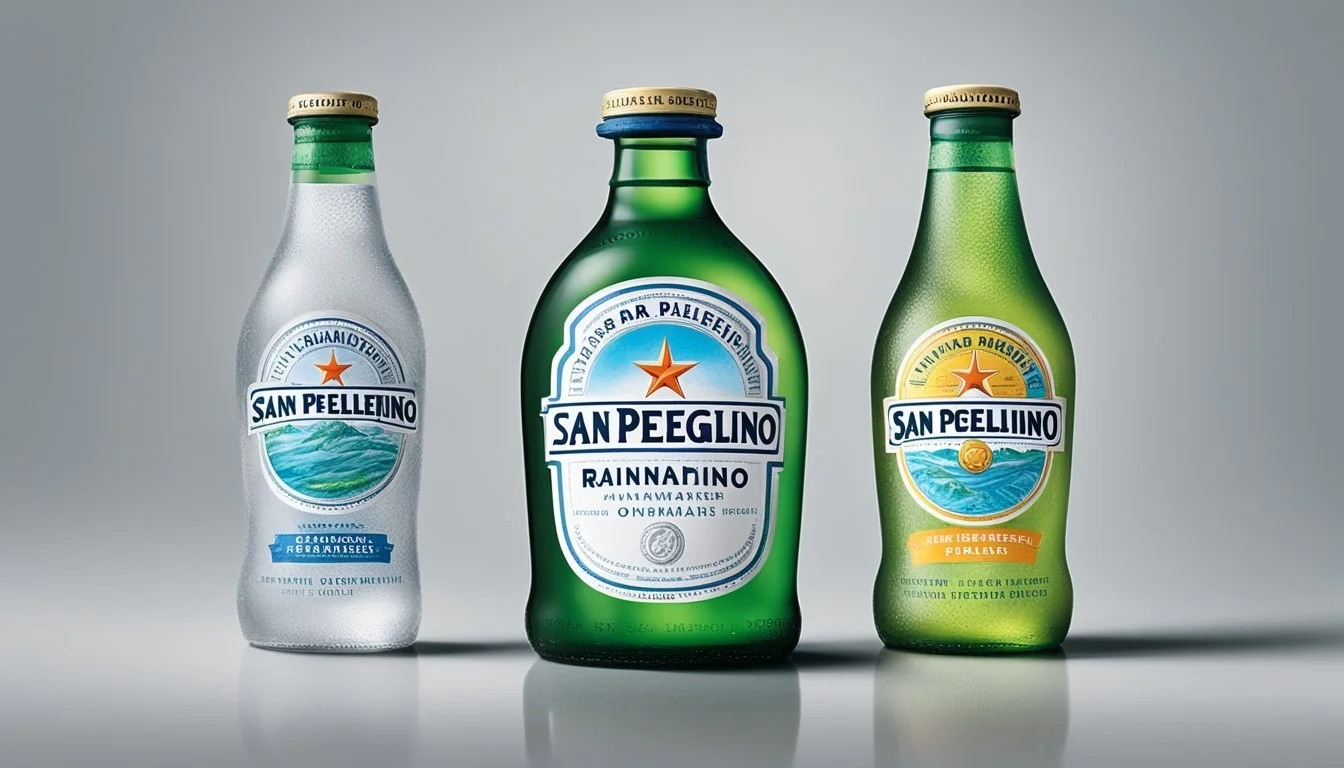San Pellegrino vs. Richard’s Rainwater
Which Bottled Water is Better?
Choosing bottled water often comes down to personal preference, but understanding the characteristics of each brand can guide consumers toward the best choice. San Pellegrino offers a mellow sparkling experience, making it a favorite among those who appreciate a subtler bubble and refined mineral taste. On the other hand, Richard's Rainwater, the only rain-sourced bottled water on the market, appeals to those drawn to its unique sourcing and commitment to sustainability.
San Pellegrino, with its Italian heritage and association with gourmet dining, provides a touch of luxury in everyday hydration. Richard's Rainwater, collected and purified in the United States, boasts a distinct story rooted in environmental consciousness and innovative water harvesting methods.
Each brand brings something special to the table. For consumers seeking a premium, effervescent touch suitable for fine dining, San Pellegrino stands out. Meanwhile, those focusing on sustainability and a clean, fresh taste may find Richard’s Rainwater to be their ideal choice.
Overview of San Pellegrino and Richard’s Rainwater
San Pellegrino and Richard’s Rainwater are two distinct bottled water brands, each offering unique qualities. San Pellegrino is renowned for its naturally carbonated mineral water sourced from Italy, whereas Richard’s Rainwater focuses on collecting rainwater in Texas.
Origin and Source Analysis
San Pellegrino originates from the Lombardy region in Italy, tapping into springs rich in minerals like calcium and magnesium. Its distinct sparkling characteristic is natural, derived from carbon dioxide found in the spring.
Richard’s Rainwater, on the other hand, captures rainwater before it touches the ground in Texas. This process ensures the water is free from fluoride and chlorine, making it one of the purest bottled waters available.
Brand History and Development
San Pellegrino's history dates back to 1899. Over the years, it has solidified its reputation globally, often found in fine dining restaurants and premium stores like Whole Foods and Kroger. The brand positions itself as a symbol of Italian elegance and quality.
Richard’s Rainwater began in the early 2000s with the innovative idea of bottling rainwater. Since its modest start, sales soared from $100,000 in 2017 to $10 million in 2023. The brand markets itself as an eco-friendly alternative in bottled water, leveraging local Texas resources.
Product Varieties
San Pellegrino offers a range of products including traditional sparkling mineral water and flavored sparkling drinks. Their packaging varies from glass bottles, emphasizing a premium experience, to more practical plastic bottles for everyday use.
Richard’s Rainwater features both still and sparkling rainwater, available in glass and aluminum cans. The product’s simplicity and purity are its main selling points, targeting health-conscious consumers who seek the cleanest water possible.
Taste Profile and Consumer Preferences
When it comes to taste, San Pellegrino and Richard’s Rainwater cater to different palates.
San Pellegrino is renowned for its crisp, effervescent texture. It offers a slightly salty flavor due to its mineral content, making it a popular choice for those who prefer their water to have a distinct, flavorful profile. This sparkling water's taste is often described as refreshing and clean.
Richard’s Rainwater, by contrast, is known for its pure, neutral taste. Collected directly from rain, this water is celebrated for its clean and fresh taste, free from any mineral aftertaste. This can be particularly appealing to those who prefer a more subtle and natural flavor in their bottled water.
The purification process and filtration methods also contribute significantly to their taste. San Pellegrino undergoes natural filtration through the Italian Alps' aquifers, enriching it with minerals like calcium and magnesium. Richard’s Rainwater, on the other hand, uses advanced filtration systems to ensure the purity and safety of its product without altering the natural taste of rainwater.
Ingredients in San Pellegrino include naturally occurring minerals that enhance its taste. Richard’s Rainwater is essentially pure H2O, with no additional ingredients, highlighting its clean and simple flavor profile.
Both brands are also popular in the beverage industry for different reasons. San Pellegrino's sparkling quality makes it an excellent addition to cocktails, adding an effervescent touch that enhances the drinking experience. Richard's Rainwater's purity makes it a preferred choice for those looking for a refreshing, unadulterated glass of water.
In conclusion, consumer preferences for either of these bottled waters will largely depend on their taste preferences and the context in which they plan to consume the water. Whether they enjoy a mineral-rich, sparkling refreshment or a pure, neutral hydration experience will guide their choice.
Quality and Purity of the Water
Both San Pellegrino and Richard's Rainwater emphasize high standards in quality and purity. Their methods of filtration and the sources of their water significantly impact their safety and cleanliness for consumers.
Comparison of Filtration and Purification Methods
San Pellegrino uses groundwater from the Italian Alps. It undergoes a natural filtration process through rock layers, imparting mineral content and a unique taste. Sparkling water from San Pellegrino is known for its slightly acidic pH resulting from carbonation.
Richard's Rainwater focuses on rainwater collection. The water undergoes filtration and purification to become potable. Richard's Rainwater boasts a renewable process, capturing rain, which is then purified to standards that provide consumers with pure, clean drinking water.
Impact of Source on Quality and Safety
The quality of San Pellegrino is influenced by its Alpine groundwater source. The mineral-rich water is naturally filtered, ensuring a distinctive flavor. Bottled at the source, San Pellegrino maintains a high safety standard, providing clean and mineral-dense water.
Richard's Rainwater is collected in Dripping Springs at Tank Town. The method of capturing and purifying rainwater results in a renewable and environmentally friendly source. Purification processes ensure that the water is clean and safe for drinking, highlighting its commitment to sustainability and purity.
Environmental Considerations and Sustainability
When comparing San Pellegrino and Richard's Rainwater in terms of sustainability, there are significant differences in their approaches to bottling materials and resource collection. Each company’s practices impact their environmental footprint and contribute to their overall environmental impact.
Bottling Materials and Recycling
Richard's Rainwater uses glass bottles for packaging, which are highly recyclable and contribute less to soil and water pollution compared to plastic bottles. The use of glass is seen as an environmentally friendly choice because it reduces the waste ending up in landfills.
San Pellegrino primarily uses plastic bottles, specifically PET bottles, which are recyclable but often not recycled at the same rate. These plastic bottles contribute to higher carbon emissions during production and are more likely to contribute to environmental pollution if not properly disposed of.
The choice of bottling material directly impacts the carbon footprint of each product. Glass, although heavier and more energy-intensive to transport, represents a more sustainable option due to its infinite recyclability. Plastic bottles' carbon footprint is comparatively high, making Richard's Rainwater potentially a net-positive choice in this category.
Collection and Reliance on Natural Resources
Richard's Rainwater collects rainwater, reducing reliance on natural groundwater and well water sources, which are often overexploited. This method of collection is environmentally friendly and utilizes a renewable water source.
San Pellegrino sources its water from natural springs, relying on groundwater that is replenished by the natural water cycle but can be impacted by seasonal variations and overuse. Collection sites for San Pellegrino need to be managed carefully to prevent depletion and ensure long-term sustainability.
Using rainwater contributes to a sustainable practice by tapping into a renewable resource that does not strain existing well water or groundwater supplies. This contrasts with the potential environmental impact of spring water collection, which can affect local ecosystems if not sustainably managed.
Packaging and Accessibility
San Pellegrino and Richard's Rainwater present distinct approaches to packaging and market accessibility. These differences can influence consumer preference and availability in retail spaces.
Innovations in Bottled Water Packaging
San Pellegrino primarily utilizes glass bottles. This choice stands out for being eco-friendly and enhancing the premium feel. Glass maintains the water's purity, preventing any potential contamination from packaging materials.
Richard's Rainwater, on the other hand, opts for aluminum cans and plastic bottles. Aluminum cans are recyclable and lightweight, which reduces the environmental footprint. Plastic bottles offer convenience and lower transportation costs, making them a versatile option for various markets.
Retail Presence and Consumer Availability
San Pellegrino has a strong presence in upscale grocery stores such as Whole Foods and Albertsons. Its distribution channels cover major urban centers, including Austin and New Orleans. This wide reach ensures that consumers can easily find San Pellegrino water in many major grocery chains.
Richard's Rainwater has a strong foothold in health-focused retailers and can be found in stores like Kroger and regional outlets in Louisiana and Mississippi. Their packaging versatility allows for broader placement in different retail formats, including convenience stores and specialty markets, increasing their accessibility.
Both brands leverage their distinct packaging strategies to appeal to specific segments and make their products accessible across various retail environments.
Comparative Analysis: Costs and Pricing
When comparing the costs and pricing of San Pellegrino and Richard’s Rainwater, clear differences emerge.
San Pellegrino typically caters to a premium market. It is often found in dining establishments and is available in both still and sparkling varieties. A 500ml bottle of San Pellegrino can range from $1.50 to $3.00, depending on the retailer.
Richard’s Rainwater also positions itself in the premium segment. Known for its sustainable packaging and rain-harvesting process, Richard’s commands a high price point. A 500ml bottle generally sells for $2.00 to $3.00.
Here’s a quick cost comparison:
Brand Price per 500ml Bottle San Pellegrino $1.50 - $3.00 Richard’s Rainwater $2.00 - $3.00
San Pellegrino’s sparkling water often costs slightly more than its still variant. Richard’s Rainwater, on the other hand, maintains a consistent price across its offerings.
Marketing strategies also play a key role. San Pellegrino is marketed with an emphasis on its Italian heritage and luxury image. Richard’s Rainwater focuses on sustainability and environmental impact, appealing to eco-conscious consumers.
Sales channels vary. San Pellegrino enjoys wide distribution in restaurants, grocery stores, and online. Richard’s Rainwater is more niche, found in specialty stores and select online platforms.
These factors make choosing between the two a matter of personal preference and budget.
Community and Social Impact
San Pellegrino and Richard’s Rainwater both demonstrate their commitment to the community and the environment through various initiatives.
San Pellegrino has ongoing efforts in environmental sustainability. The brand is working towards reducing its carbon footprint and enhancing recycling processes. As a part of its initiatives, San Pellegrino has invested in renewable energy and efficient water management systems.
Richard’s Rainwater, sourced from Dripping Springs, Texas, emphasizes a unique approach by bottling rainwater. The company is headquartered in Austin and has a significant focus on environmental stewardship. They prioritize collecting and purifying rainwater, which minimizes the depletion of natural groundwater resources.
A notable feature of Richard's Rainwater is its 100% potable water collection method. By utilizing rainwater, the brand cuts down on the extensive packaging resources typically required for traditional bottled water production. This method significantly reduces the environmental impact compared to conventional sources.
San Pellegrino engages in various philanthropic activities in Italy and beyond. These efforts include providing clean water access to underserved regions and supporting local food and beverage cultures.
Richard's Rainwater stands out with its community-oriented projects. For example, the company donates water to areas in need, demonstrating strong social responsibility. They have also extended support to regions like New Orleans and Kiln, Mississippi, showcasing their commitment to aiding communities during crises.
Both brands show distinct pathways in community engagement and environmental responsibility, underlining their contributions to sustainable practices and social welfare.
Conclusion
Consumers seeking bottled water have diverse preferences and priorities. Both San Pellegrino and Richard’s Rainwater offer unique qualities that cater to different needs.
San Pellegrino focuses on a mineral-rich sparkling experience. It originates from Italy, boasting a refreshing taste and effervescent bubbles. Ideal for those who enjoy a crisp, sparkling beverage with a touch of elegance.
Richard’s Rainwater appeals to the eco-conscious consumer. Sourced from rainwater, this brand emphasizes sustainability. It offers a fresh and pure hydration choice, ideal for those who prioritize environmental considerations in their purchasing decisions.
Factor San Pellegrino Richard’s Rainwater Type Sparkling mineral water Still water Origin Italy Rainwater sourced Key Benefit Mineral-rich, sparkling Eco-friendly, fresh Ideal For Fans of sparkling beverages Environmentally conscious people
In evaluating both options, it’s clear that personal preference plays a significant role. Bottled water enthusiasts must consider taste, mineral content, and environmental impact.
Future trends may favor brands like Richard’s Rainwater as sustainability grows in importance. Yet, the classic appeal of San Pellegrino continues to resonate.
Choosing the right bottled water depends on individual tastes and values. Whether seeking the refined, sparkling sensation of San Pellegrino or the purity and sustainability of Richard’s Rainwater, both brands provide high-quality hydration.
More About San Pellegrino
Acqua Panna vs San Pellegrino: Which Bottled Water is Better?
Boxed Water vs San Pellegrino: Which Bottled Water is Better?
Core Hydration vs San Pellegrino: Which Bottled Water is Better?
Ice Mountain vs San Pellegrino: Which Bottled Water is Better?
Icelandic Glacial vs San Pellegrino: Which Bottled Water is Better?
Just Water vs San Pellegrino: Which Bottled Water is Better?
Mountain Valley Spring Water vs San Pellegrino: Which Bottled Water is Better?
Nestle Pure Life vs San Pellegrino: Which Bottled Water is Better?
Poland Spring vs San Pellegrino: Which Bottled Water is Better?
San Pellegrino vs Alkaline88: Which Bottled Water is Better?
San Pellegrino vs Aqua Carpatica: Which Bottled Water is Better?
San Pellegrino vs Cascade Mountain: Which Bottled Water is Better?
San Pellegrino vs Castle Rock: Which Bottled Water is Better?
San Pellegrino vs CBD Living: Which Bottled Water is Better?
San Pellegrino vs Crystal Geyser: Which Bottled Water is Better?
San Pellegrino vs Crystal Lake: Which Bottled Water is Better?
San Pellegrino vs Essence pH10: Which Bottled Water is Better?
San Pellegrino vs Hawaii Volcanic: Which Bottled Water is Better?
San Pellegrino vs Hawaiian Springs: Which Bottled Water is Better?
San Pellegrino vs Kirkland Signature: Which Bottled Water is Better?
San Pellegrino vs Liquid Death: Which Bottled Water is Better?
San Pellegrino vs Open Water: Which Bottled Water is Better?
San Pellegrino vs Proud Source: Which Bottled Water is Better?
San Pellegrino vs Purely Sedona: Which Bottled Water is Better?
San Pellegrino vs Simple Truth: Which Bottled Water is Better?
San Pellegrino vs Smartwater: Which Bottled Water is Better?
San Pellegrino vs Solan de Cabras: Which Bottled Water is Better?
San Pellegrino vs Talking Rain AQA: Which Bottled Water is Better?
San Pellegrino vs Topo Chico: Which Bottled Water is Better?
San Pellegrino vs Weird Water: Which Bottled Water is Better?
San Pellegrino vs Whole Foods 365: Which Bottled Water is Better?
San Pellegrino vs Whole Foods Italian Still Mineral water: Which Bottled Water is Better?
San Pellegrino vs Zephyrhills: Which Bottled Water is Better?
More About Richard’s Rainwater
Acqua Pana vs Richard's Rainwater: Which Bottled Water is Better?
Alkaline88 vs Richard's Rainwater: Which Bottled Water is Better?
Antipodes vs Richard's Rainwater: Which Bottled Water is Better?
Aqua Carpatica vs Richard's Rainwater: Which Bottled Water is Better?
Aquafina vs Richard's Rainwater: Which Bottled Water is Better?
Arrowhead vs Richard's Rainwater: Which Bottled Water is Better?
Boxed Water vs Richard's Rainwater: Which Bottled Water is Better?
Cascade Mountain vs Richard's Rainwater: Which Bottled Water is Better?
Castle Rock vs Richard's Rainwater: Which Bottled Water is Better?
Cirro vs Richard's Rainwater: Which Bottled Water is Better?
Core Hydration vs Richard's Rainwater: Which Bottled Water is Better?
Crystal Geyser vs Richard's Rainwater: Which Bottled Water is Better?
Deer Park vs Richard's Rainwater: Which Bottled Water is Better?
Erewhon vs Richard's Rainwater: Which Bottled Water is Better?
Essentia vs Richard's Rainwater: Which Bottled Water is Better?
Eternal vs Richard's Rainwater: Which Bottled Water is Better?
Ethos vs Richard's Rainwater: Which Bottled Water is Better?
Evian vs Richard's Rainwater: Which Bottled Water is Better?
Hawaii Volcanic vs Richard's Rainwater: Which Bottled Water is Better?
Hawaiian Springs vs Richard's Rainwater: Which Bottled Water is Better?
Ice Mountain vs Richard's Rainwater: Which Bottled Water is Better?
Icelandic Glacial vs Richard's Rainwater: Which Bottled Water is Better?
Just Water vs Richard's Rainwater: Which Bottled Water is Better?
Kroger vs Richard's Rainwater: Which Bottled Water is Better?
LIFEWTR vs Richard's Rainwater: Which Bottled Water is Better?
Liquid Death vs Richard's Rainwater: Which Bottled Water is Better?
Mananalu vs Richard's Rainwater: Which Bottled Water is Better?
Mountain Valley Spring Water vs Richard's Rainwater: Which Bottled Water is Better?
Nestle Pure Life vs Richard's Rainwater: Which Bottled Water is Better?
Origin vs Richard's Rainwater: Which Bottled Water is Better?
Ozarka vs Richard's Rainwater: Which Bottled Water is Better?
Penta vs Richard's Rainwater: Which Bottled Water is Better?
Perrier vs Richard's Rainwater: Which Bottled Water is Better?
Poland Spring vs Richard's Rainwater: Which Bottled Water is Better?
Purely Sedona vs Richard's Rainwater: Which Bottled Water is Better?
Richard's Rainwater vs 1907water: Which Bottled Water is Better?
Richard's Rainwater vs 7-Select: Which Bottled Water is Better?
Richard's Rainwater vs Action: Which Bottled Water is Better?
Richard's Rainwater vs Big Chill: Which Bottled Water is Better?
Richard's Rainwater vs Big Win: Which Bottled Water is Better?
Richard's Rainwater vs BodyArmor: Which Bottled Water is Better?
Richard's Rainwater vs CBD Living: Which Bottled Water is Better?
Richard's Rainwater vs Crystal Lake: Which Bottled Water is Better?
Richard's Rainwater vs Dasani: Which Bottled Water is Better?
Richard's Rainwater vs Essence pH10: Which Bottled Water is Better?
Richard's Rainwater vs HFactor: Which Bottled Water is Better?
Richard's Rainwater vs Kirkland Signature: Which Bottled Water is Better?
Richard's Rainwater vs Open Water: Which Bottled Water is Better?
Richard's Rainwater vs Ophora: Which Bottled Water is Better?
Richard's Rainwater vs Proud Source: Which Bottled Water is Better?
Richard's Rainwater vs Pure Life: Which Bottled Water is Better?
Richard's Rainwater vs Ramona: Which Bottled Water is Better?
Richard's Rainwater vs Refreshe: Which Bottled Water is Better?
Richard's Rainwater vs Simple Truth: Which Bottled Water is Better?
Richard's Rainwater vs Skyra: Which Bottled Water is Better?
Richard's Rainwater vs Talking Rain AQA: Which Bottled Water is Better?
Richard's Rainwater vs The Well: Which Bottled Water is Better?
Richard's Rainwater vs Weird Water: Which Bottled Water is Better?
Richard's Rainwater vs Whole Foods 365: Which Bottled Water is Better?
Richard's Rainwater vs Zenwtr: Which Bottled Water is Better?
Smartwater vs Richard's Rainwater: Which Bottled Water is Better?
Solan de Cabras vs Richard's Rainwater: Which Bottled Water is Better?
Starkey vs Richard's Rainwater: Which Bottled Water is Better?
Tahoe vs Richard's Rainwater: Which Bottled Water is Better?
Topo Chico vs Richard's Rainwater: Which Bottled Water is Better?
Tru Alka vs Richard's Rainwater: Which Bottled Water is Better?
Volvic vs Richard's Rainwater: Which Bottled Water is Better?
Waiakea vs Richard's Rainwater: Which Bottled Water is Better?
Whole Foods Italian Still Mineral water vs Richard's Rainwater: Which Bottled Water is Better?
Zephyrhills vs Richard's Rainwater: Which Bottled Water is Better?








